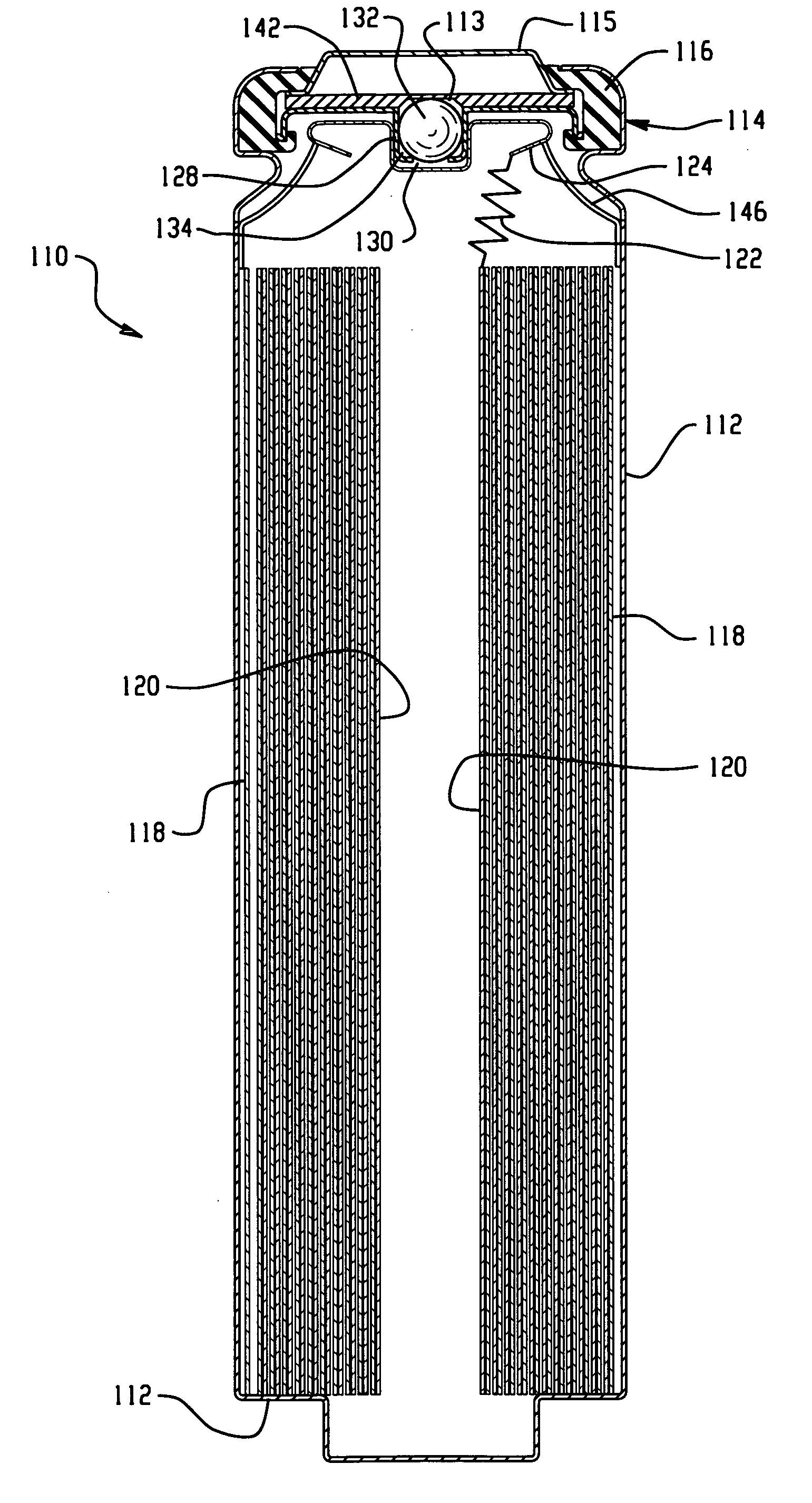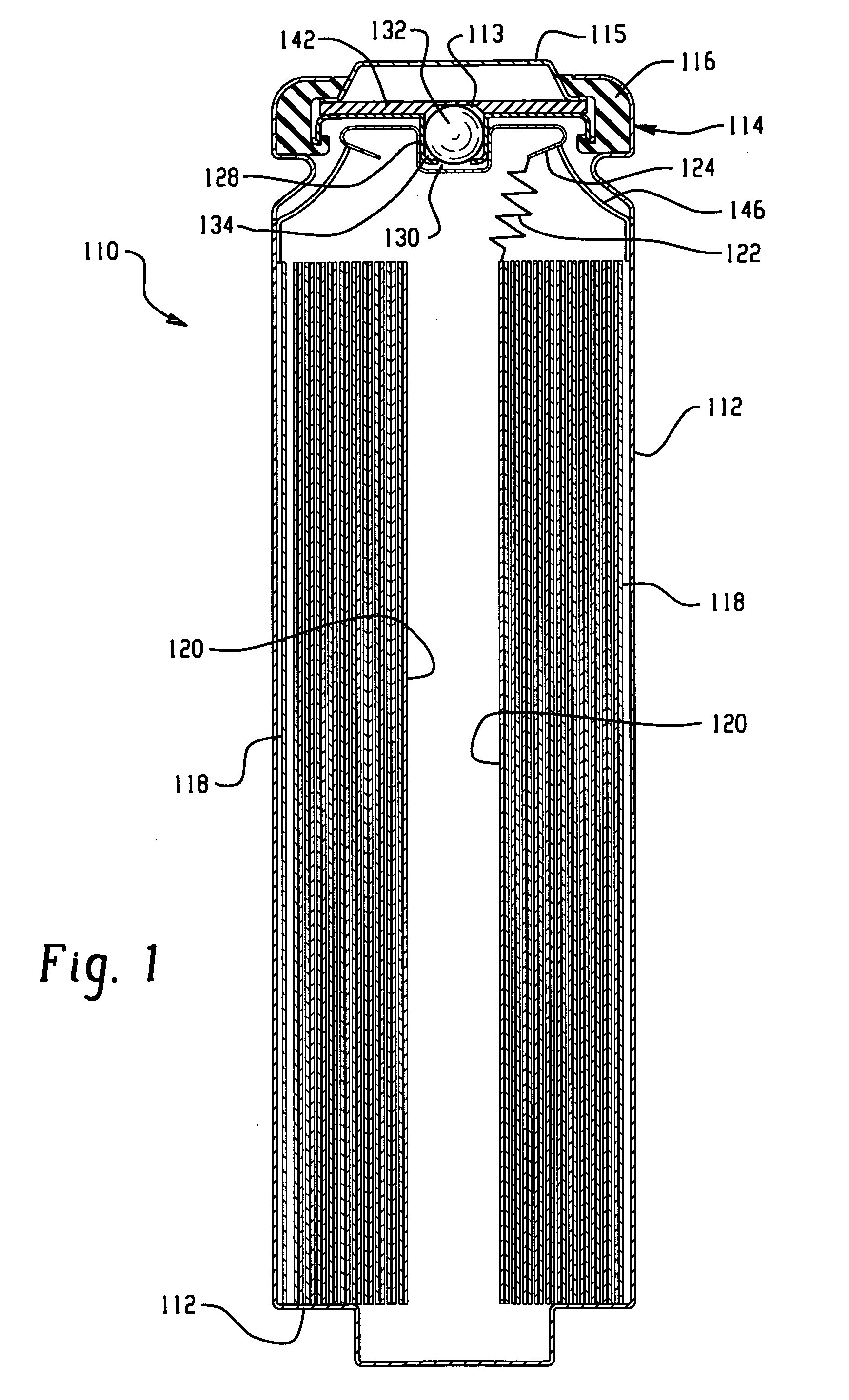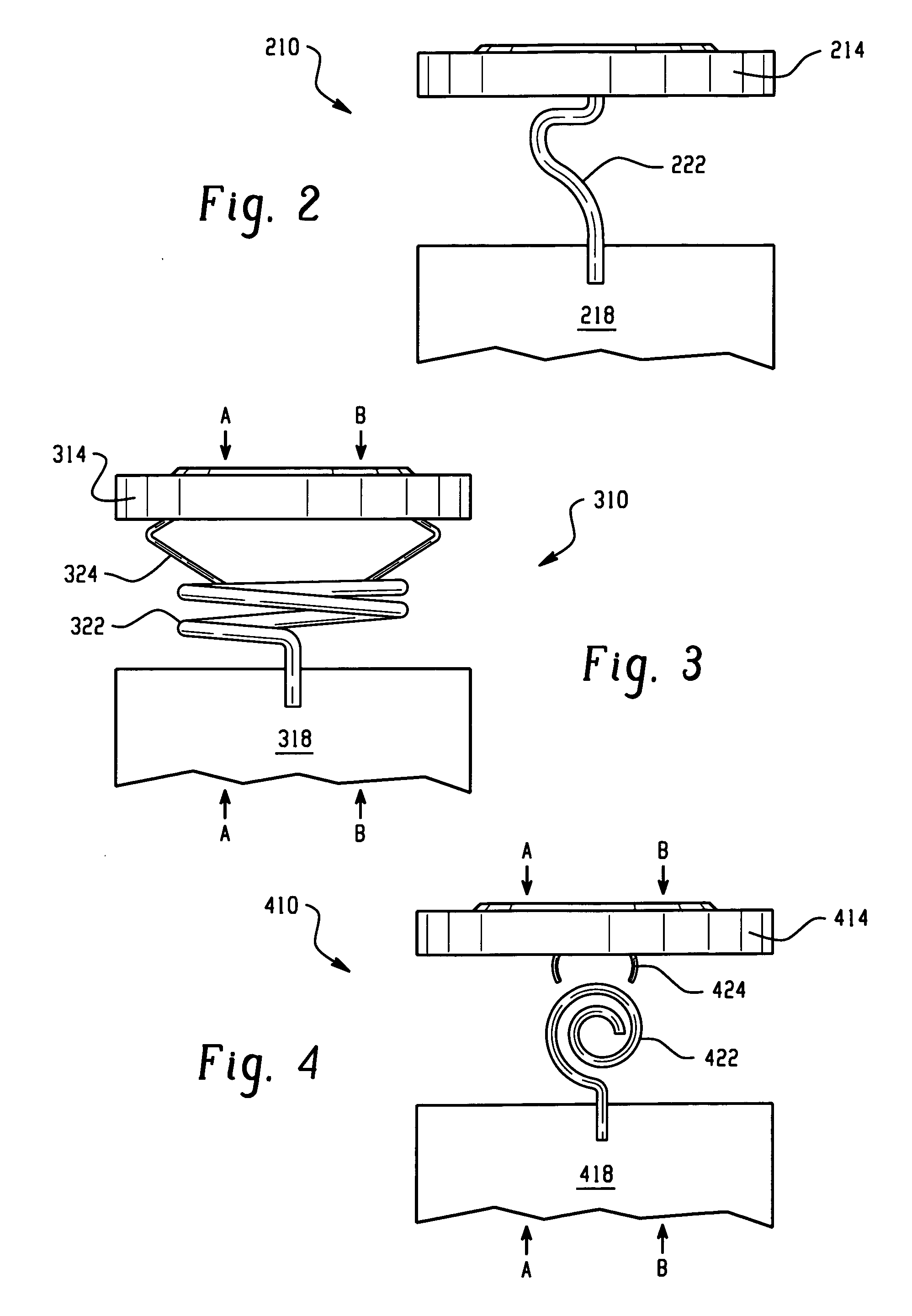Electrochemical cell with positive container
a technology of electrochemical cells and containers, applied in the field of electrochemical cells, can solve the problems of limiting the amount of electrochemically active materials that may be incorporated into such cells, affecting the performance of electrochemical cells, and affecting the stability of long-term storage, so as to improve the efficiency of lithium utilization, improve the interfacial contact, and improve the effect of cell performan
- Summary
- Abstract
- Description
- Claims
- Application Information
AI Technical Summary
Benefits of technology
Problems solved by technology
Method used
Image
Examples
Embodiment Construction
[0032]The electrochemical cells of the present invention are preferably primary cells, that each include a positive electrode that makes electrical contact with a container of a cell thereby providing the container with a positive polarity and a negative electrode that makes electrical contact with a portion of a cover thereby providing the cover with a negative polarity, wherein the container is free of electrical contact with the cover. In one embodiment, the negative electrode comprises lithium as the negative electrode active material, preferably with the positive electrode comprising iron disulfide (FeS2). The positive electrode and negative electrode may be provided in the form of strips, which are joined together with a separator in an electrode assembly, preferably in a jellyroll or spiral-wound configuration, and placed in the container with the positive electrode making electrical contact with the container.
[0033]The electrochemical cells of the invention are normally cyli...
PUM
| Property | Measurement | Unit |
|---|---|---|
| mass | aaaaa | aaaaa |
| temperatures | aaaaa | aaaaa |
| length | aaaaa | aaaaa |
Abstract
Description
Claims
Application Information
 Login to View More
Login to View More - R&D
- Intellectual Property
- Life Sciences
- Materials
- Tech Scout
- Unparalleled Data Quality
- Higher Quality Content
- 60% Fewer Hallucinations
Browse by: Latest US Patents, China's latest patents, Technical Efficacy Thesaurus, Application Domain, Technology Topic, Popular Technical Reports.
© 2025 PatSnap. All rights reserved.Legal|Privacy policy|Modern Slavery Act Transparency Statement|Sitemap|About US| Contact US: help@patsnap.com



